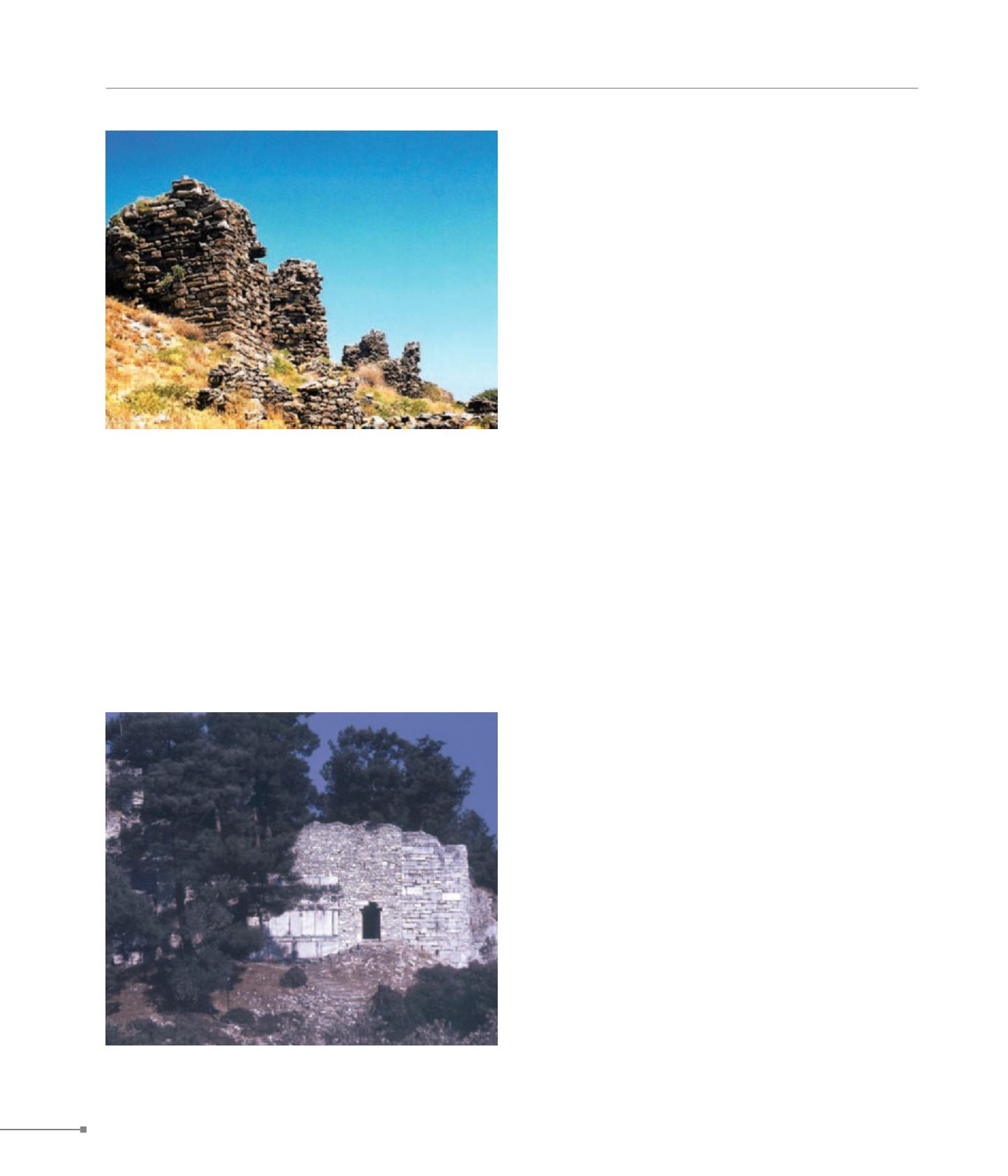
Imroz Adası, now Gökçeada. Imbros.
Thasos.
THE ISLANDS
314
564.
Imroz Adas
ı
, now G
ö
k
ç
eada. Imbros.
A number of architectural sculptures of the 6th c. have been
found, possibly belonging to a local workshop. There are also
a few dating from the Mid-Byzantine period. From the three
monasteries of the mid-14th c. known from the sources, no
architectural remnants have been detected. The fortifications
at Kastro (Kalek
ö
y) and Palaiokastro, S of Derek
ö
y, mentioned
in 15th c. sources, are possibly earlier or have been built on
earlier fortifications. At Kastro there are inscriptions of 1390
and 1455-6. Remnants of two more small fortifications exist at
Arassia and at Palaiokastraki.
565. Thasos, Limenas Castle (Θάσος, κάστρο Λιμένα)
564. Imbros, Castle (Ίμβρος, Κάστρο)
565.
Thasos
.
Limenas. (2)
The Early Christian city extended within and outside the ancient
city. It was possibly destroyed by earthquakes (late 6th-early 7th
c.) and was deserted after the first half of the 7th c., a misfortune
that also struck the coastline throughout the island. Limenas was
a bishop’s see in the Early Christian era. In the Late Byzantine pe-
riod there was alternation of Byzantine and Genoese domination
(Zaccaria and Gattilusi families), and Byzantine suzerainty (pos-
sessed by brothers Alexios and Ioannis). Limenas was definitely
occupied by the Ottomans in 1459.
Basilica at the square: The ruins of a three-aisled, cruciform basil-
ica of the 6th c. with opulent sculpted decoration lie on Limenas’
central square. Basilica at the ancient agora: It is a three-aisled
basilica of the 4th c. with narthex, whose crypt possibly houses
the martyr Acacius’ relics. Excavations have revealed Early Chris-
tian houses.
The harbour of Limenas was protected by a small castle (tower
and defensive walls) that was built by Ioannis, the grand primice-
rius (a Byzantine administrative or church title). It is now demol-
ished but has been partly revealed during excavations. A large,
rectangular tower, possibly constructed in 1384, has an elevated
entrance and was almost exclusively built of spolia from the an-
cient city, on the centre of which the castle had been founded.
A moat surrounded the circuit walls. It seems that the ancient
harbour, with no indications of Byzantine repairs, formed a unit
with the Late Byzantine castle. In 1384 the grand primicerius Io-
annis donated the castle to the Pantokrator monastery on Mount
Athos. At Evraiokastro, on a rocky elevation above the harbour
of Limenas, at the site of an ancient sanctuary is a three-aisled
basilica of the 5th c.
At the citadel, the corner tower of the castle was located next to
the E gate and was built almost entirely of spolia. It dates to the
9th or 10th c. (or maybe earlier). The citadel gained its present
form in the 15th c. due to the Gattilusi family. In the interior are
a small Genoese church and a cistern. In Aghios Vasileios was
excavated a complex of two Early Christian basilicas that were
laid waste and deserted in the last decades of the 6th or the first
decades of the 7th c. On the ruins of each basilica a small, single-
nave church was built in the Mid-Byzantine period. The remains
of an Early Christian monastic complex are located 1.5 km west
of Limenas, at Tsoukalario. A room, a single-nave chapel, a stoa,


